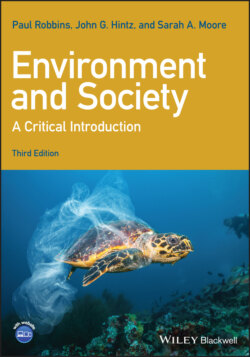Читать книгу Environment and Society - Paul Robbins - Страница 33
Women’s Rights, Education, Autonomy, and Fertility Behavior
ОглавлениеHowever, mounting evidence from around the world demonstrates that population and resource transitions are far more diverse and have far more drivers and explanations than the DTM might suggest. In some countries or regions, population growth has fallen dramatically, for example, in the absence of significant economic growth and change. The state of Kerala in southern India is a paramount example of such an outcome. In the 1950s, this small rural state had the highest population growth rate in India but by the 1990s it was among the lowest, falling from 44 per thousand in 1951 to 18 per thousand in 1991 (Parayil 2000). How was this transition achieved, since – contrary to the DTM – the population remains largely rural and manages with a lower than average gross domestic product per capita, even lower than other states within India?
The secret may be outside of strictly economic factors. Kerala has a higher than average level of women’s education and literacy and a higher than average availability of rural health care – especially for women. This is a universal phenomenon, moreover, and women’s education and literacy correlate significantly with lower fertility rates, a measure of the number of children the average woman in a place has over her reproductive lifespan (Figure 2.6). Where women’s rights are observed and protected, population growth ends.
Figure 2.6 National fertility and female literacy rates around the world: 2006. As female literacy increases, and along with it women’s autonomy and employment, fertility rates fall to replacement levels. Source: Analysis by authors; Data from Population Reference Bureau (2008). World Population Data Sheet from www.prb.org/Publications/Datasheets/2008/2008wpds.asp (accessed 7 October 2009).
Fertility Rate A measure describing the average number of children birthed by an average statistical woman during her reproductive lifetime
There are questions about whether correlation here is linked to causality. In countries with lower fertility rates, for example, women are freer to pursue education. Both women’s education and lower fertility may themselves be caused by other factors in culture and society. Even so, reduced fertility rates are also associated with the availability of condoms, the availability of women’s reproductive health care on demand, and the social/political “autonomy” of women (meaning social ability to make independent decisions) within households and communities. Put simply, it is increasingly clear that the political and economic condition of women in society is the best and most reliable predictor of demographic conditions. To the degree that population is an influence on the environment, the solution to ecological problems therefore lies in women’s rights around the world.
